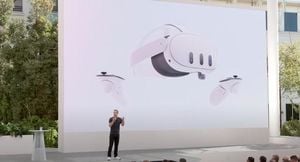Europe’s car market shifted gears in July 2025, posting its strongest growth in over a year and revealing a rapidly changing landscape for electric vehicles (EVs) and traditional automakers alike. According to data released on August 28, 2025, by the European Automobile Manufacturers Association (ACEA), new car sales across the European Union, Britain, and the European Free Trade Association rose by 5.9%, reaching a total of 1.09 million vehicles for the month. This marks the best performance since April 2024 and offers a much-needed boost for an industry still grappling with economic headwinds and evolving regulations.
The data, reported by Reuters and corroborated by the IndexBox platform, shows that Germany was the driving force behind this rebound, registering an 11.1% surge in new car sales. That robust growth in Europe’s largest economy helped offset declines in other major markets: sales in the UK dropped by 5%, France by 7.7%, and Italy by 5.1%. Meanwhile, Spain, Poland, and Austria stood out with impressive gains of 17.1%, 16.5%, and 31.6%, respectively.
Within the EU itself, car sales increased by 7.4% compared to the previous year. The performance of individual automakers was a mixed bag. Volkswagen registrations jumped 11.6% year-on-year, and Renault saw an 8.8% increase. Stellantis, on the other hand, experienced a 1.1% drop in sales. These numbers reflect the intense competition and shifting consumer preferences as the region accelerates toward electrification and greener transportation options.
The EV segment was a particular bright spot in July. Registrations of battery electric cars soared by 39.1%, hybrid electric vehicles by 56.9%, and plug-in hybrids by 14.3%. Electrified vehicles collectively accounted for 59.8% of all new car registrations in the EU, a notable leap from 51.1% a year earlier. This surge underscores the growing appetite for cleaner, more sustainable mobility solutions among European consumers, even as economic uncertainty lingers.
Yet, the EV boom is also reshaping the competitive landscape. Tesla, once the dominant force in Europe’s battery-electric market, saw its sales fall by a staggering 40.2% in July, reducing its market share from 1.4% to just 0.8%. This marks the seventh consecutive month that Tesla has lost ground in Europe, a trend that’s raising eyebrows among analysts and investors alike. In a dramatic twist, Chinese automaker BYD was included in the monthly sales data for the first time and made an immediate impact. BYD’s sales skyrocketed by 225.3%, capturing a 1.2% market share and overtaking Tesla in the process.
This development is more than just a quirky statistic; it signals a profound shift in the dynamics of Europe’s EV market. European automakers are feeling the heat as Chinese manufacturers, led by BYD, ramp up their presence and threaten to disrupt established hierarchies. According to Reuters, domestic giants like Volkswagen are already studying new model launches and strategies to fend off this rising competition and ensure compliance with regulations that encourage EV adoption.
But the industry’s challenges go beyond market share battles. The regulatory environment is proving to be a formidable obstacle. Ola Kaellenius, CEO of ACEA, recently co-signed a letter to European Commission President Ursula von der Leyen, warning that the EU’s ambitious targets for cutting CO2 emissions from vehicles—including a 100% reduction for cars by 2035—are no longer feasible. This stark message reflects mounting concern among automakers about the pace and practicality of the green transition, particularly as they face multi-billion euro losses and issue profit warnings. Several companies have also pointed to the added burden of U.S. import tariffs as a factor weighing on their bottom lines.
The fragmentation of the European market is another complicating factor. While Germany’s new EV incentive plan, introduced in June 2025, helped drive increases of 58% in battery electric vehicle sales and an eye-popping 83.6% in plug-in hybrid sales, other countries are struggling to keep pace. The patchwork of incentives, regulations, and consumer preferences across the continent makes it difficult for automakers to implement uniform strategies or predict demand with any certainty.
Amid the flurry of sales figures and market share shifts, there are also signs of modernization—or the lack thereof—in the industry’s infrastructure. Carvana, a major online car retailer, pointed out that just 14 state departments of motor vehicles in the United States currently accept e-signatures on vehicle transaction paperwork. While this detail pertains to the U.S., it highlights the broader challenge of digitization and bureaucracy that continues to affect automotive markets on both sides of the Atlantic.
In a move that could potentially ease some of the trade-related pressures, the European Commission on August 28, 2025, proposed removing tariffs on imported U.S. industrial goods. Part of a broader trade agreement with the United States, this initiative is expected to result in a retroactive lowering of U.S. tariffs on European cars. If enacted, it could provide some relief to European automakers struggling with the dual burdens of regulatory compliance and international trade barriers.
Looking at the broader context, the July surge in car sales offers a glimmer of hope for an industry that has weathered a series of storms in recent years—ranging from the COVID-19 pandemic to supply chain disruptions and shifting geopolitical currents. The rapid growth of electrified vehicles is both a testament to the industry’s adaptability and a reminder of the challenges that lie ahead. With nearly 60% of new car registrations in the EU now electrified, the momentum toward a cleaner future is undeniable. But as Ola Kaellenius and others have cautioned, the road to full decarbonization is fraught with obstacles, and the industry will need continued support and flexibility from policymakers to stay the course.
Meanwhile, the rivalry between Tesla and BYD is likely to intensify, with European brands caught in the crossfire. As Chinese manufacturers continue to gain traction and domestic players scramble to innovate, the coming months will be critical in determining who leads the next chapter of Europe’s automotive story. For now, though, July’s numbers suggest that the continent’s love affair with cars—especially electrified ones—is far from over.





